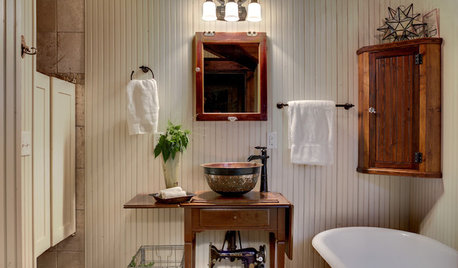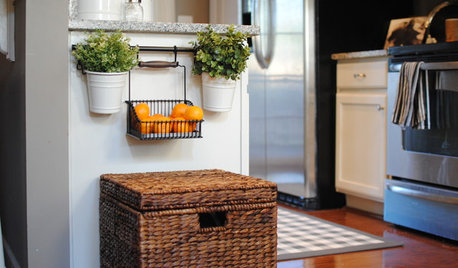Machines of Today Use Too Little Water
a1an
9 years ago
Related Stories

DECLUTTERING10 Types of Clutter to Toss Today
Clear the decks and give the heave-ho to these unneeded items
Full Story
DECORATING GUIDESPaper Chase: Wallpaper Through the Ages to Today
Get on a decorating roll with a wall covering that's been around for centuries but comes in more exciting designs than ever
Full Story
VINTAGE STYLEAntique Sewing Machines: Tailor Made for Nostalgic Decor
In full-on vintage rooms or contrasting modern looks, old sewing machines and tables are stirring up the past in a most stylish way
Full Story
ARCHITECTURE6 Tower Houses Rise to the Tastes of Today
No medieval turrets here, just materials like sleek metal and glass — and, of course, spectacular views
Full Story
FIREPLACESHeat Your Space in Style with Today's Wood-Burning Stoves
Cleaner burning and streamlined, new wood-burning stoves warm up the room
Full Story
DECORATING GUIDESVictorian Bedrooms for Today's Homes
Learn how to incorporate Victorian-era staples, from wardrobes to washstands, into your modern lifestyle
Full Story
KITCHEN DESIGNEasy Green: 10 Small Kitchen Changes to Make Today
Taking small steps in going green can lead to big results over time, and starting in the kitchen is a smart choice
Full Story
KITCHEN DESIGN10 Elements of Today's State-of-the-Art Kitchens
New technology, smart kitchen layouts and the hottest new appliances will make you feel like a Top Chef
Full Story
GREEN BUILDINGChampioning the Solar House, From the 1930s to Today
Homes throughout history that have used the sun offer ideas for net-zero and passive homes of the present, in a new book by Anthony Denzer
Full Story
FURNITURESeating in the Round: An Old Idea That’s Still Fresh Today
Bring in romance, unexpected style or just great seating for conversations with sofas that turn their back on the straight and narrow
Full Story








suburbanmd
dadoes
Related Professionals
Saratoga Springs Kitchen & Bathroom Designers · Eagle Mountain Kitchen & Bathroom Remodelers · Minnetonka Mills Kitchen & Bathroom Remodelers · Clovis Kitchen & Bathroom Remodelers · Londonderry Kitchen & Bathroom Remodelers · Newberg Kitchen & Bathroom Remodelers · North Arlington Kitchen & Bathroom Remodelers · Kentwood Cabinets & Cabinetry · Annapolis Custom Closet Designers · Lexington Custom Closet Designers · Carlisle Flooring Contractors · Eldersburg Flooring Contractors · Roselle Flooring Contractors · Saint Louis Park Flooring Contractors · Uxbridge Flooring ContractorsGaryFx
hvtech42
a1anOriginal Author
laundryvet
Cavimum
rococogurl
dave1812
davidrt28 (zone 7)
zzackey
dave1812
fahrenheit_451
a1anOriginal Author
zzackey
zzackey
zorroslw1
nerdyshopper